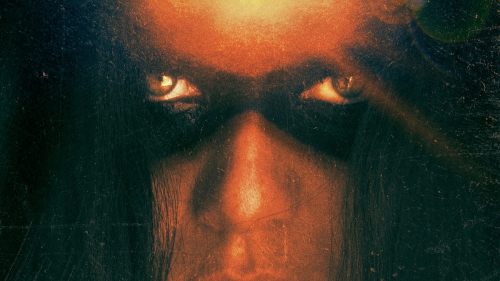Fantasia 2017 Review: MOHAWK Is Something Different
We Are Still Here is a Fulci-drenched haunted house horror, and writer/director Ted Geoghegan surprises by following his debut film with a wild departure in Mohawk. He, along with cowriter and author Grady Hendrix, examines the War of 1812, and the Mohawk Nation’s efforts to protect native homelands in the midst of an American-British conflict of which they want no part. It’s a fascinating piece of history, one of special significance here in Canada where the film held its world premiere.
To that end, Geoghegan did well to cast a Mohawk actress in the lead role. Kaniehtiio Horn is a powerful presence as Oak, who fights to survive this brutal war alongside her lovers Calvin Two Rivers (Justin Rain) and Joshua Pinsmail (Eamon Farren). They’re a family unlike any we’ve seen onscreen before, a representation of polyamory that Geoghegan – a member of the LGBTQ community – said during the Q&A was important to him to portray. It’s one of many details that make Mohawk such an unusual and admirable film, and Oak’s unwavering strength is another.
Oak, Calvin and Joshua are pursued by a band of racist American defectors including WWE’s Jon Huber, Robert Longstreet, Ian Colletti and BMD’s own Noah Segan. They’re led by the deliciously evil Hezekiah Holt (Ezra Buzzington), a scenery-chomping villain audiences will love to hate. Mohawk is a small, low-budget film, very intimate in setting, but it never has trouble establishing the depth of these stakes. We’re terribly invested in Oak and her family, and we want the very worst for Hezekiah Holt.
That intimate setting does work to its detriment somewhat. Mohawk was filmed in the deep woods in upstate New York, and just about all of the action takes place in these woods. But unfortunately there’s not much to distinguish one part of the woods from another, so after a while it begins to feel like our heroes are being chased in circles around the same acre or so. And a note on sound: our presentation had a blown speaker, and much of the sound was muffled or distorted. We lost some dialogue, and Wojciech Golczewski’s score seems like it’s probably very cool if we could hear it the way it was intended. I look forward to seeing the film again under better auditory circumstances.
But those quibbles do little to detract from such an uncommon and ambitious film. Viewers looking for a straight horror movie should look elsewhere, but Mohawk does a fine job of reminding us that sometimes the truest horror is that of our own history.



